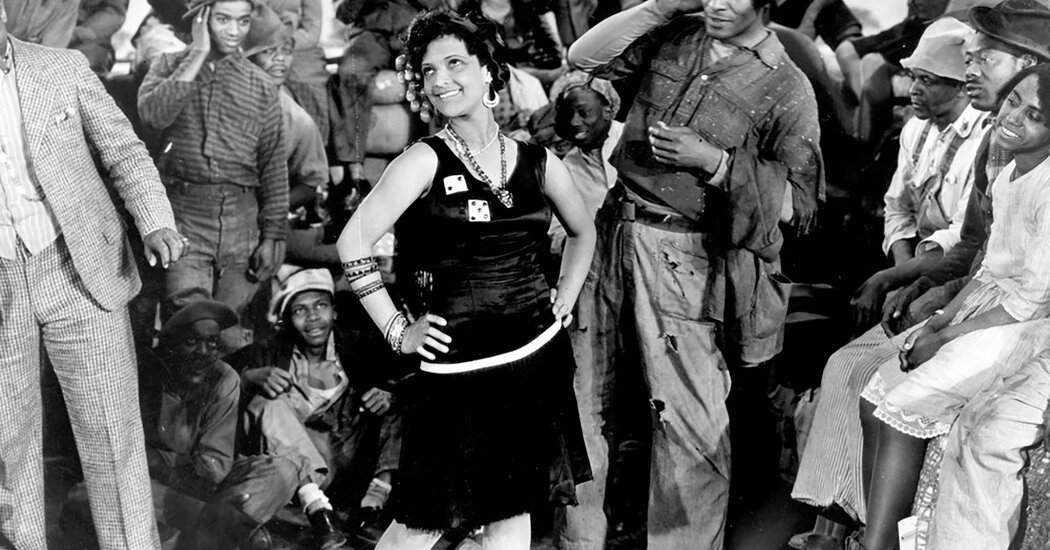
McKinney has second billing and fewer lines than Haynes does, but the vibrancy of her presence and the importance of her Jezebel role make her part seem far larger than it is. This was McKinney’s film debut but she already knew how to move onscreen (a lost art), and how to take up space and hold it tight. Like the other performances, her delivery can seem overstated, with needlessly exaggerated, near-hieroglyphic poses and gestures. This is partly because of the era’s pantomime-influenced style of screen acting, though the hyperbole may also reflect a white director’s ideas about Black humanity. Yet while Chick is broadly drawn, McKinney fills her with intensities of feeling.
Vidor, who longed to make an all-Black film, was an established director when he pitched “Hallelujah!” to MGM. “The whites will stay away,” one executive warned, but the studio relented when Vidor rolled his salary into the film’s financing. (“Hallelujah!” did flop, partly because big white theaters wouldn’t book it.) The studio’s meddling continued. The producer Irving Thalberg found the actress originally cast as Chick, Honey Brown, lacking in sex appeal, which led to McKinney getting cast. The studio also had its say about the soundtrack, which apparently, and pathetically, Thalberg found depressing and strange, and explains why Chick sings the Irving Berlin tune “Swanee Shuffle.”
Vidor may have wanted to make an all-Black movie, but MGM clearly didn’t want it too Black. Even so, Vidor did his part to strive for authenticity or at least his version of it, and went all out, hiring performers from stage and street alike, and shooting on location. The film also employed some African American crew, including an assistant director, Harold Garrison, and choral director, Eva Jessye, who wrote music for it. In 1930, after the film opened, Jessye criticized the production’s shabby treatment of its Black talent and explicitly noted that on some days McKinney and Haynes were ready to collapse from overwork. “There was not,” Jessye claimed, “much hallelujah in it for the cast.”
By that point, the film had already hit cinemas and stirred up excitement in both the Black and white press. It wasn’t the first Black movie; independent filmmakers like Oscar Micheaux, among other African Americans, were producing Black movies for Black audiences. It wasn’t even the first Black musical from a major studio, Fox’s “Hearts in Dixie” having already opened. But in its music, religious themes and portrayal of a loving family, Vidor’s film offered images of ordinary African American existence that many critics embraced. “It is the sense of real life,” W.E.B. DuBois wrote in The Crisis, the official publication of the N.A.A.C.P., “that marks ‘Hallelujah’ as epoch-making.”


More Stories
Prince Harry: I want my father and brother back
Jeremy Renner, Marvel’s Hawkeye, has surgery after snow plough accident
Marvel actor Jeremy Renner in ‘critical condition’ after snow plough accident